25 Feb 2010
Photo of the Day – Concrete Lines
Architectural Photography, Arizona Photography, Photo of the Day, Tempe Area Photography No Comments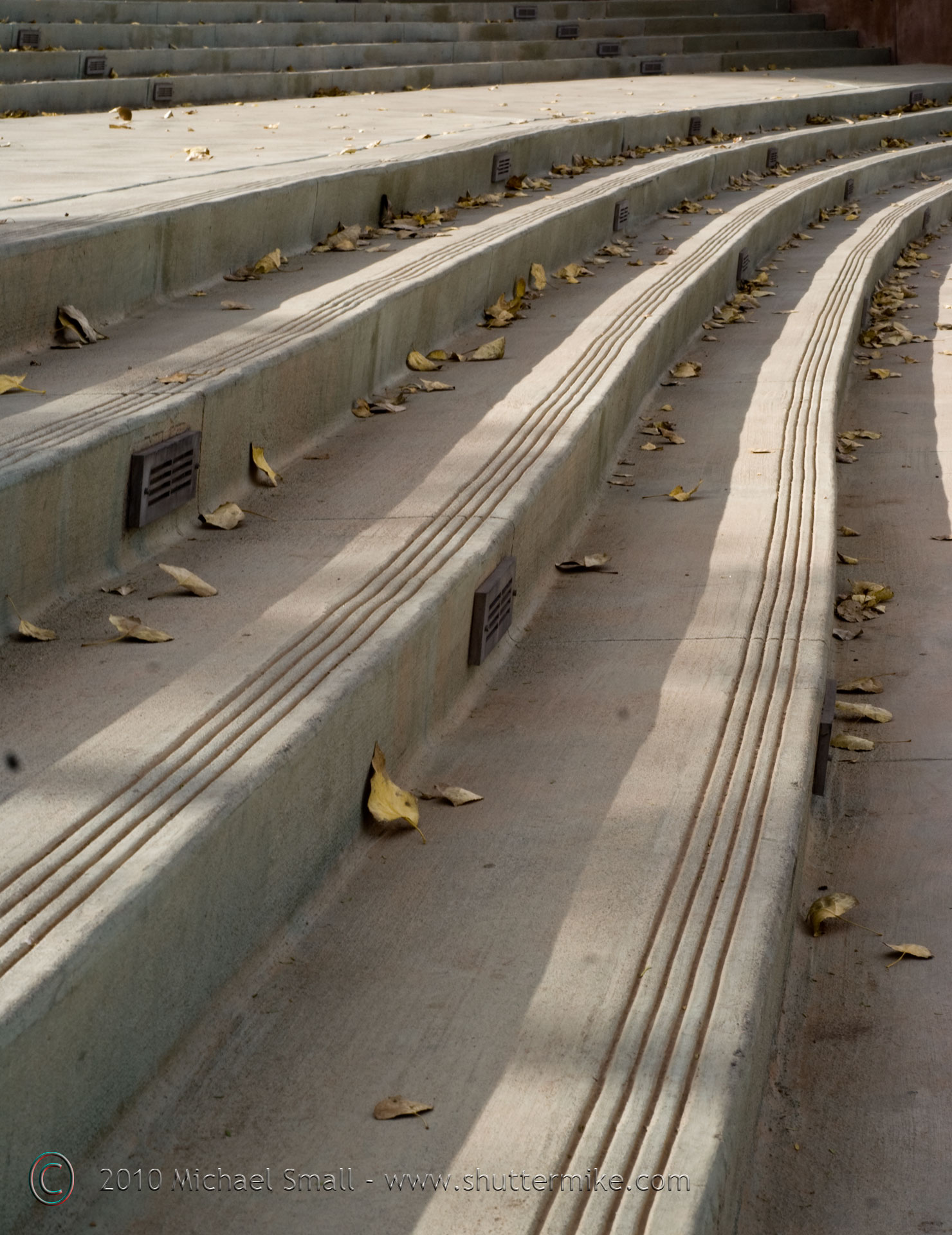 Concrete Lines
f/18 – 1/60 sec – ISO 100 – Focal Length 50 mm
Concrete Lines
f/18 – 1/60 sec – ISO 100 – Focal Length 50 mm25 Feb 2010
 Concrete Lines
f/18 – 1/60 sec – ISO 100 – Focal Length 50 mm
Concrete Lines
f/18 – 1/60 sec – ISO 100 – Focal Length 50 mm25 Feb 2010
My friend over at Awesome Toy Blog forwarded me an article from the British Journal of Photography about photographer’s rights in the UK. There has been a lot of buzz in photography news lately about the rights of both amateur photographers as well as photojournalists in the UK being impeded upon by the police. Although you hear similar stories of “harassment” from the police of photographers here in the US, the British seem to have taken it to a whole new level. All in the name of anti-terrorism.
New laws that recently went into effect in the UK could result in jail for photographing police. The laws:
allow for the arrest – and imprisonment – of anyone who takes pictures of officers ‘likely to be useful to a person committing or preparing an act of terrorism’.
This seems to leave a lot of room for interpretation by the police while limiting the rights of the photographer even further. There have been stories of everyone from press photographers to wedding photographers being stopped, questioned and even detained for what the police determine to be “suspicious” photography behavior. I would hope this would be no more than a minor inconvenience for the truly innocent but at the same time it seems to be taking things too far. Especially when images of more and more public spaces are readily available to anyone on the web via Google maps and live web cams that record more and more of our everyday lives. Are the terrorists really the ones standing in front of Parliament with their Canon DSLR snapping photographs?
24 Feb 2010
Photoburst.net hosts a daily travel photography contest on an ongoing basis. A new photo of the day is selected each day from all of that day’s submissions and is highlighted on the site. Then at the end of the week a top photo from all of that week’s daily winners is selected. Finally each photo of the week has a chance to become the photo of the month. Monthly winners receive a $50 gift certificate to Kiva.org and get to be a guest editor the following month.
If you have not heard of Kiva, it is a microfinance company that makes small loans to entrepreneurs around the world with the goal of alleviating poverty.
24 Feb 2010
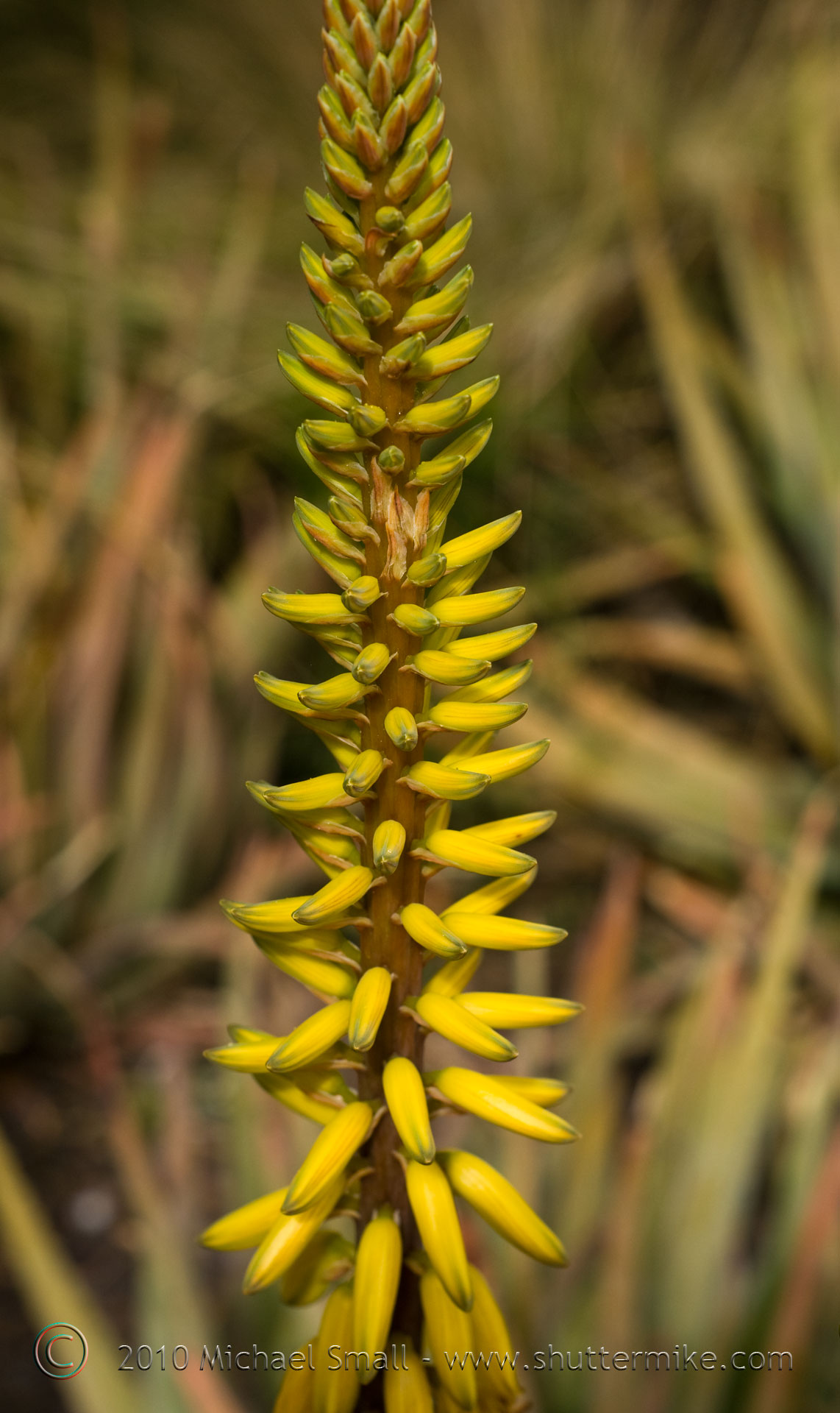 A Pop of Yellow
Yellow Blooms of an Aloe Plant at Scottsdale Xeriscape Garden
f/5.6 – 1/400 sec – ISO 100 – Focal Length 50 mm
A Pop of Yellow
Yellow Blooms of an Aloe Plant at Scottsdale Xeriscape Garden
f/5.6 – 1/400 sec – ISO 100 – Focal Length 50 mm23 Feb 2010
Sometimes you capture an image where the subject is right and the composition is just what you were hoping for but the exposure is off or the color saturation is not what it could be. With post-processing the image is not lost. In the photo below I was very happy with the subject and with a little cropping the composition was what I had intended. However, the coloring of the photographer was very dull. The cloudy sky and the snow covered building and trees made the whole image very gray and dark. By using the quick mask feature of Adobe Photoshop CS4 I was able to select the sky and make a few digital enhancements.
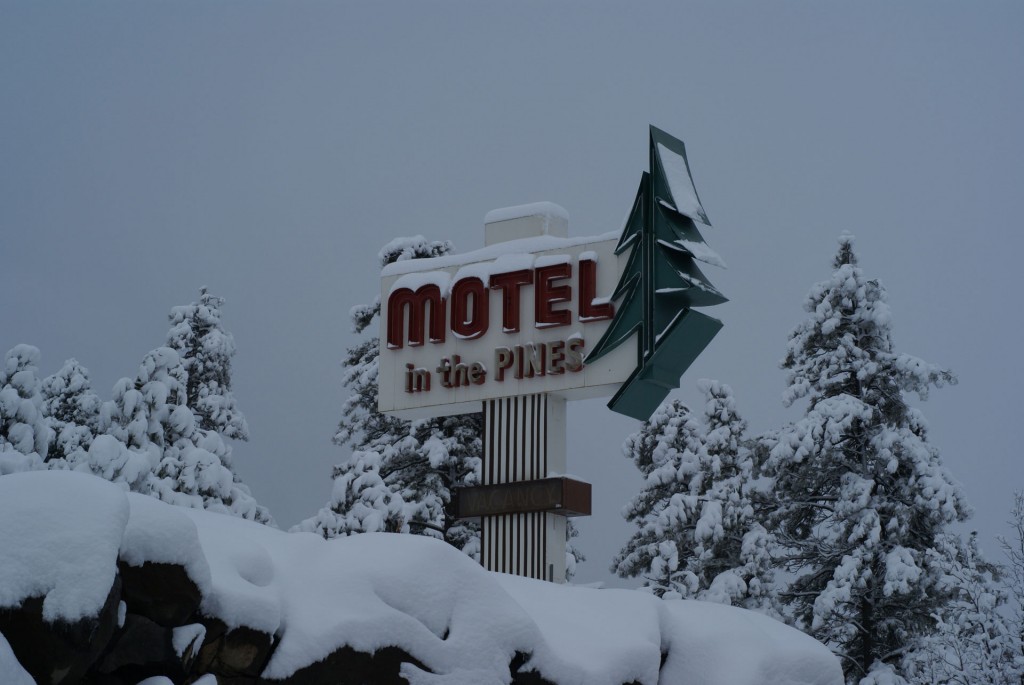 Image before any post-processing work
Image before any post-processing work
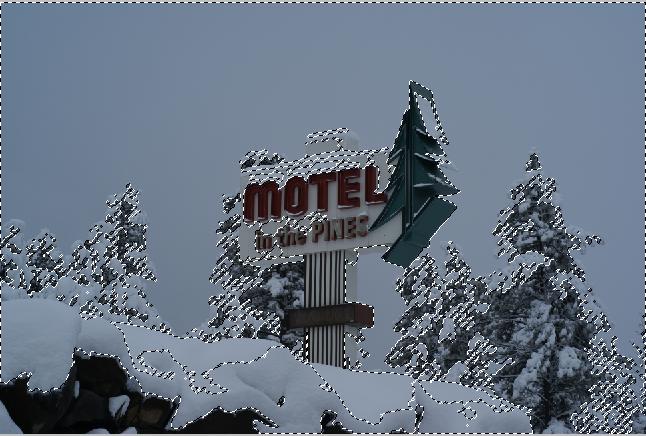 The first instinct in Photoshop may be to use one of the selection tools from the tools menu such as the magic wand or one of the lasso tools. But in this particular photo’s case the magic wand tool selects much more than just the sky because everything is so similar in tone (see image at the right). And the lasso tools are more difficult to use because of all the non-uniform edges of the trees.
The first instinct in Photoshop may be to use one of the selection tools from the tools menu such as the magic wand or one of the lasso tools. But in this particular photo’s case the magic wand tool selects much more than just the sky because everything is so similar in tone (see image at the right). And the lasso tools are more difficult to use because of all the non-uniform edges of the trees.
This makes the quick mask tool a great alternative. I feel that it allows for more control over the area you are selecting.
Before getting into the quick mask tool I opened the image in camera RAW and made some basic adjustments to white balance and exposure to brighten the image overall. But the image was still too monotone.
![]() 1) The Quick Mask tool can be found at the bottom of the tools menu.
1) The Quick Mask tool can be found at the bottom of the tools menu.
2) 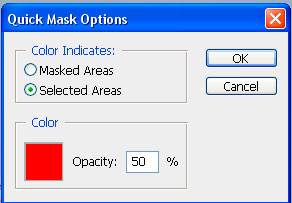 Double click it to get started and the Quick Mask Options window will open. Select the “Selected Areas” option and the opacity can be left at the default 50%. Click OK.
Double click it to get started and the Quick Mask Options window will open. Select the “Selected Areas” option and the opacity can be left at the default 50%. Click OK.
3) Now select your paint brush and set the brush size to something appropriate for paining in the area you want to select.
4) Then trace an outline around the area to be selected. You will notice this method is much more forgiving than the lasso selection tools. It will look like you are painting your image pink, but don’t worry this will go away.
5) Next you need to fill in the area inside of your outline. You can either do this with your paint brush or with the paint bucket tool. The resulting image should have your selection in pink as shown below.
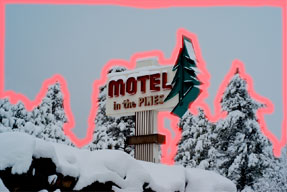
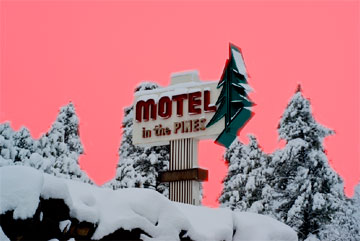
6) Now turn the quick mask off by clicking the same button you used to turn it on. Your painted area will turn to a selection as indicated by the flashing dotted lines.

7) From the Layer menu select New Adjustment Layer and then select the adjustment you want to make to the selected area. In the case of my overly dull sky I selected a color balance adjustment, but play around with it to find the effect you like.
8 ) Make your adjustments and save your image. I over did the coloring on this image to emphasize the effect, but you can go as subtle or as wild as you want.
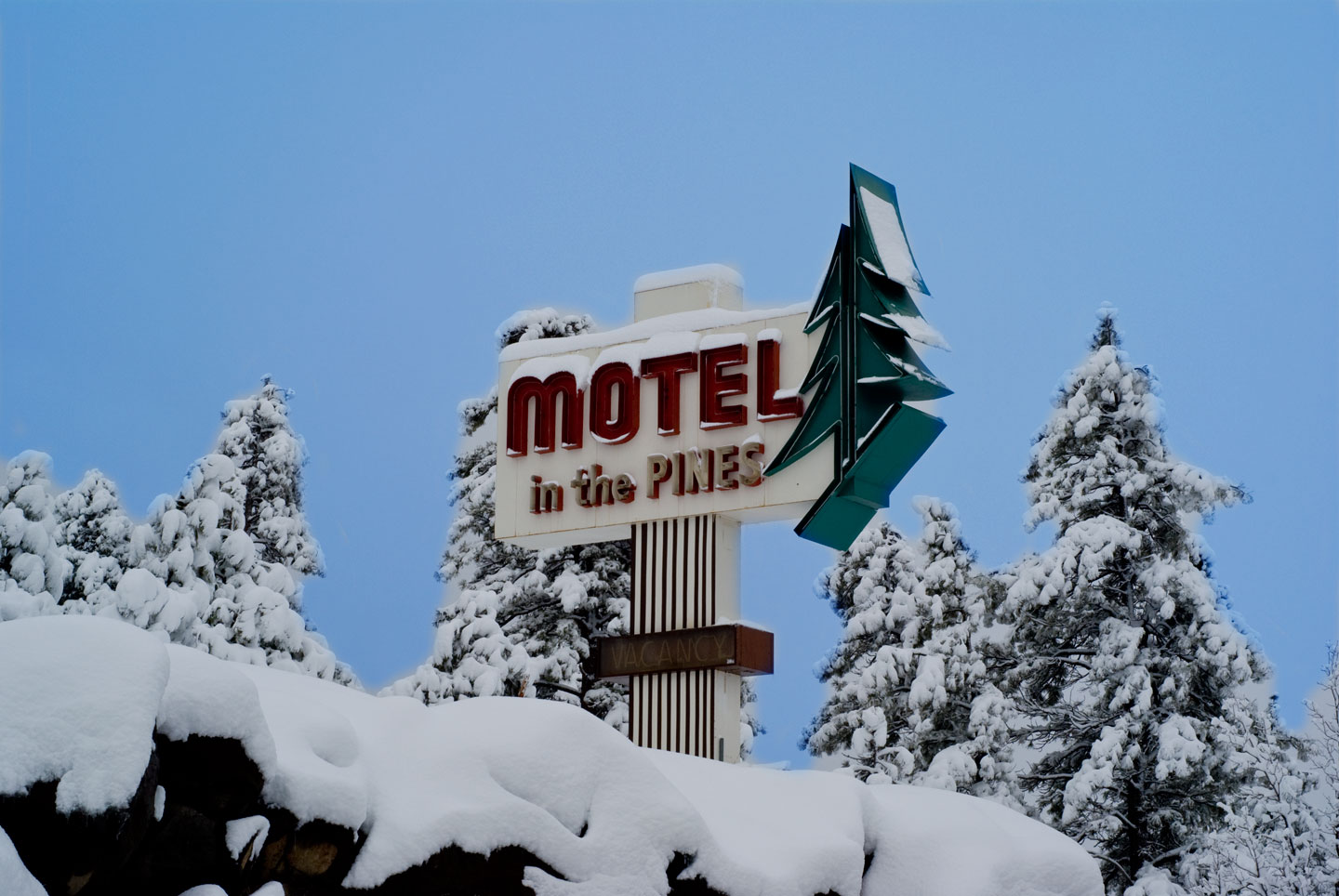
23 Feb 2010
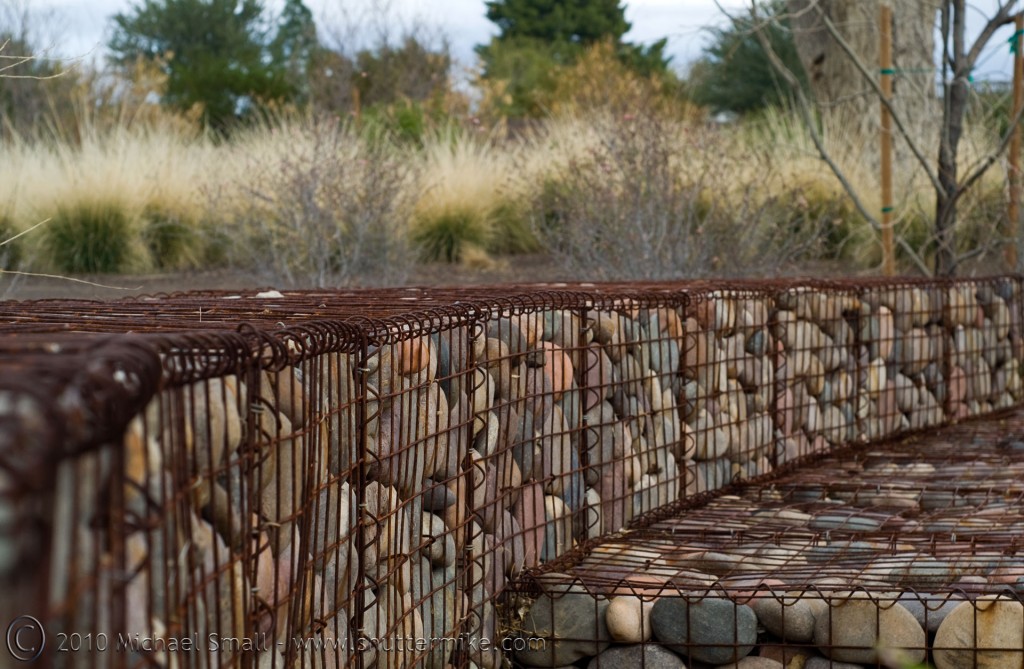 Caged Rocks
Scottsdale Xeriscape Garden
Caged Rocks
Scottsdale Xeriscape GardenXeriscape is a form of landscaping that is thankfully becoming more popular in Arizona. It refers to landscaping that relies little on supplemental irrigation because it mainly uses native plants that are adapted to the desert region. The Scottsdale Xeriscape Garden is located at Hayden and McDonald in Scottsdale, AZ.
22 Feb 2010
The Glass and Garden Community Church in Scottsdale, AZ is quintessential Mid-Century Modern architecture. It’s round form is dominated with concrete and glass as the main materials. It was designed in 1966 by E. Logan Campbell. When it first opened the parking lot incorporated drive-in movie-like car speakers so people could hear the sermon from the comfort of their cars.
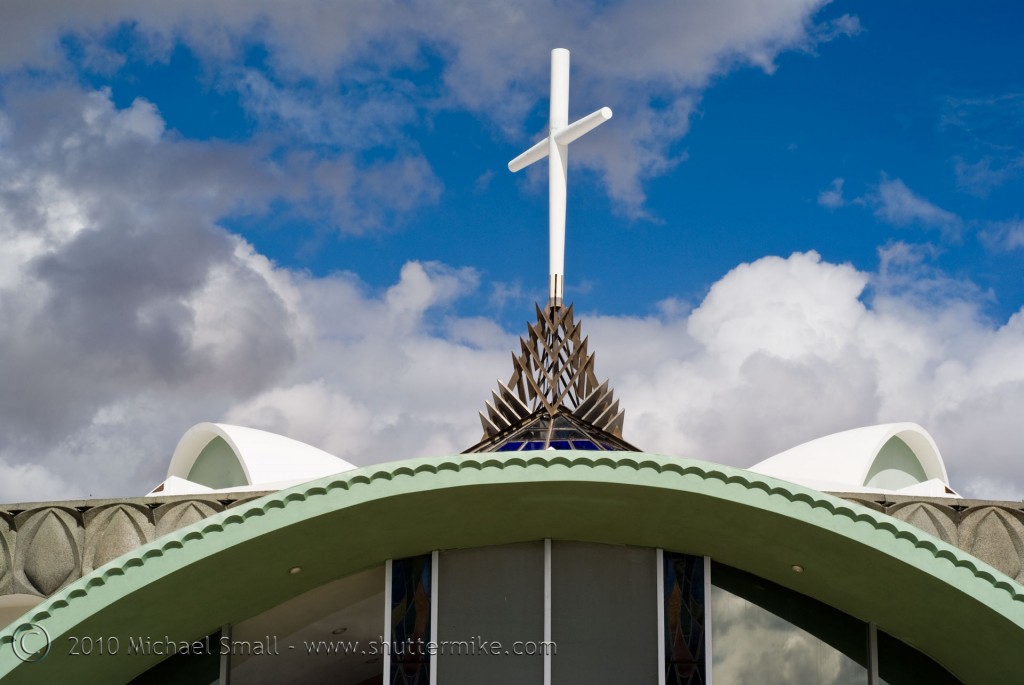 Front Facade of the Church
f/13 – 1/250 sec – ISO 100 – Focal Length 50 mm
Left – Detail of the front facade and roof-top cross – f/13 – 1/250 sec – ISO 100 – Focal Length 50 mm
Front Facade of the Church
f/13 – 1/250 sec – ISO 100 – Focal Length 50 mm
Left – Detail of the front facade and roof-top cross – f/13 – 1/250 sec – ISO 100 – Focal Length 50 mm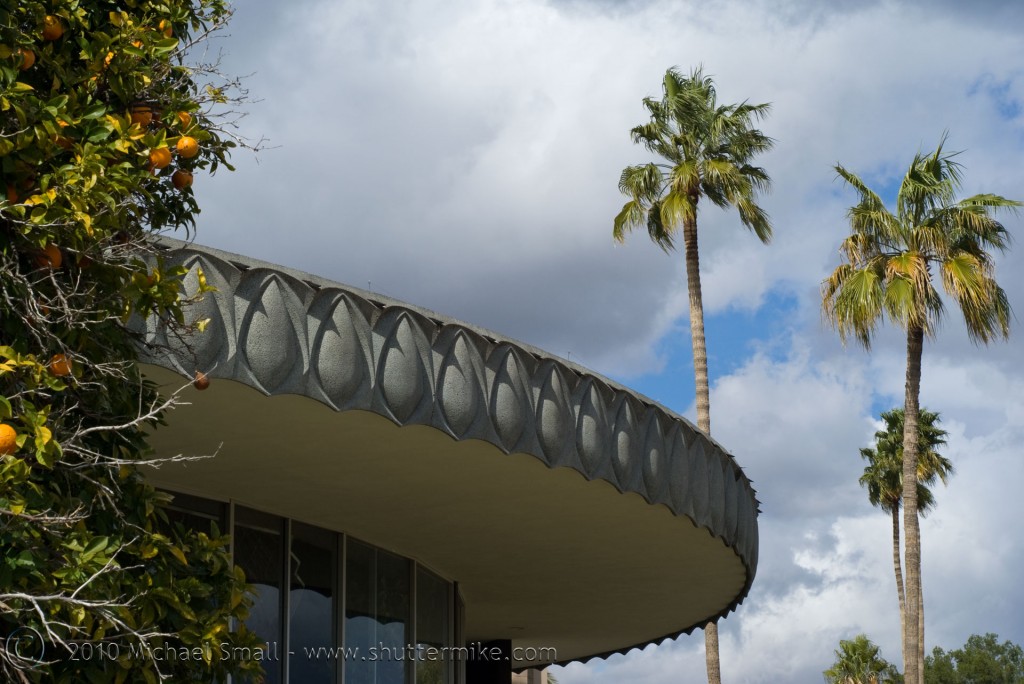
22 Feb 2010
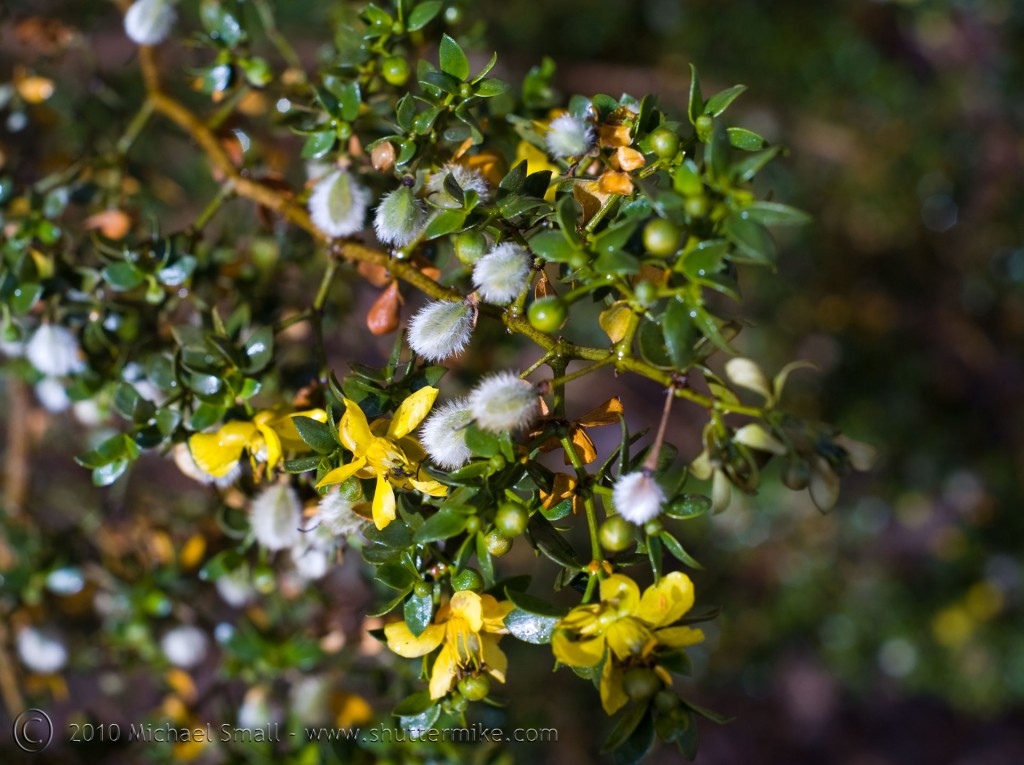 The Smell of Rain in the Desert
Creosote Bush – Larrea tridentata
f/5.6 – 1/400 sec – ISO 100 – Focal Length 50 mm
The Smell of Rain in the Desert
Creosote Bush – Larrea tridentata
f/5.6 – 1/400 sec – ISO 100 – Focal Length 50 mm
The “smell of rain” in the Arizona desert is synonymous with the Creosote (cree‘-uh-sote) bush. After a desert rain storm the air is filled with a very distinct odor that most Arizonans associate with rain.
22 Feb 2010
The 30th annual photography contest from Photographer’s Forum magazine and Sigma lenses is now accepting entries. Early entries will be accepted up through April 19th and have a small entry fee of $3.95. The final entry deadline is May 17th and the entry fee goes up to $4.95 if you miss the early date. The grand prize is $2000 cash, a Sigma 24-70 mm lens and publication in an issue of Photographer’s Forum and their annual photography book. Second place gets $1000 cash and a 12-24 mm Sigma lens.
Good luck!